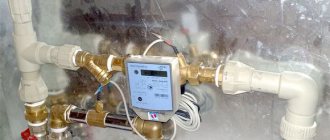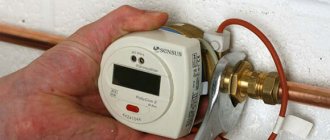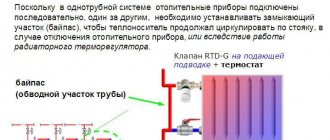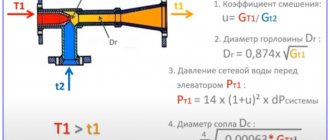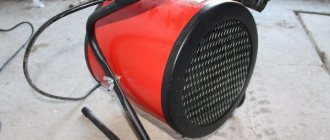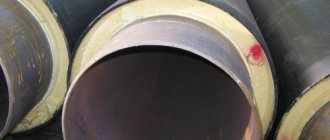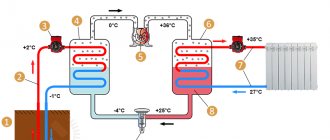What is the purpose of thermal energy metering devices?
The thermal energy metering unit is organized to:
- Control the rational use of resources.
- Monitor thermal and hydraulic conditions in the consumption and supply system of buildings.
- Document parameters specific to the coolant. This concerns, first of all, volume and temperature, pressure.
- Carrying out mutual financial settlements between clients and the enterprise supplying resources. This is facilitated by any thermal energy calculator.
What is UKUT?
Today we want to tell you about what a commercial heat metering unit (UKUT) is, what steps are necessary for its installation, what components it consists of and the nuances that may arise during its installation.
A commercial heat metering unit is a technical system consisting of measuring instruments and devices that provide heat energy metering, as well as control and registration of coolant parameters.
Commercial metering of thermal energy and coolant is organized for the following purposes:
- carrying out settlements between heat supply, heating network organizations and consumers of thermal energy;
- Control of thermal and hydraulic operating conditions of systems
- Controlling the rational use of thermal energy and coolant
- Documenting coolant parameters - mass and volume, temperature and pressure
Commercial metering of thermal energy and coolant is carried out using devices that are installed at a metering point located on the border of the balance sheet, unless a different metering point is specified by agreement.
First, let's figure out what you need to install or reconstruct UKUT.
- It is necessary to have a direct heat supply agreement with the resource supply organization;
- Submit a request for the issuance of technical equipment. conditions for the installation of UKUT and the act of delimitation of balance sheet ownership. For issuing technical conditions, RSO has 15 days
- Having received these documents, you can begin designing the UKUT. The project preparation time may vary depending on the workload, professionalism and experience of the design organization. Our company has completed dozens of projects and has extensive experience. On average, it takes us 10-15 working days to prepare project documentation. Then you can move on to the next stage
- Coordination of project documentation with RSO. The time frame for familiarization with the project in accordance with ITU No. 1034 dated November 18, 2013 is fifteen days. After studying the project by the heat supply company, two scenarios are possible. Either the project is agreed upon and transferred to the customer, or comments are issued, after which the project goes for revision. As a result of the design, you should receive an agreed document containing an explanatory note, working drawings, calculations, a programming map and a specification for equipment and materials required for installation
- The next step is the purchase of equipment and materials. Unfortunately, not all designers describe in detail what materials and equipment will be required to implement the project. Therefore, we advise you to choose experienced suppliers who can spot the shortcomings and give advice on the correct order.
- So, we have an agreed upon project, purchased equipment and materials, as well as a great desire to carry out installation. This stage is one of the most important and it is necessary to approach the choice of an installation organization with great responsibility. Don't be afraid to ask about experience, look at their portfolio. Ask whether the contractor’s specialists have been trained by the manufacturer in the installation of the selected devices. Ask for a guarantee for the work performed. At this stage, welding, plumbing and electrical installation work is carried out in accordance with the design documentation
- Next, the unit is installed, electrical installation and instrument configuration are completed. It is required to launch the devices and accumulate an archive of readings of at least three days. In parallel with this, you can write a letter to the RSO to call an inspector to accept the metering unit
What elements play the main role in thermal energy metering units?
The heating unit has a set of devices along with metering devices. Thermal energy metering tools provide several functions at once:
- Data storage.
- Data accumulation.
- Measurement.
- Display relevant information.
The metering devices are so-called special heat meters. They themselves consist of several parts:
- Flow converter, primary type.
- Heat computers.
- Resistance thermal converter.
Additional, but not mandatory, components included are pressure sensors and filters. They are selected depending on which specific meter model is currently in use. Primary converters assume the use of the following measurement models:
- Tachometer.
- By electromagnetic waves.
- Using ultrasound.
- Vortex.
General structure of devices and levels in the metering unit
All modernized resource accounting units used today have a multi-stage complex system, which includes a number of automated levels.
The level diagram is presented as follows:
- The top level is the management of the accounting unit of the automated system, the software shell of which is the automated control system.
- The middle level consists of a computer, a power supply unit, a GSM modem and an additional set of elements.
- The lower level consists of resource pressure sensors, temperature sensors and other components. They collect the necessary data about the measured environment.
Further, entering the middle level, instrumentation information data is accumulated in the flow computer. From here they are transferred to the next - upper level of the complex.
Transmission methods are different: the GSM channel is popular today, but transmission via wired networks is also quite possible.
The last years of the 20th century were characterized by the absence of an upper automated commercial metering unit. Information indicators stored in volatile memory were collected manually by citizens of our country; the alternative to manual was a semi-automatic scheme. Rapid progress contributed to the development of automation; the result was a noticeable drop in the cost of equipment for automated units, which made it possible to eliminate manual removal, leaving a wide range of technical equipment for people to use that is easy to maintain.
At the top level of automation, key data is processed within the ACS software shell. This program allows you to save all information and receive it in a convenient form. The ACS monitor receives all parameters from the sensors of the controlled environment, and also receives messages about accidents or breakdowns. In addition to automated elements, a commercial metering unit can be equipped with shut-off valves of different profiles. In addition, a commercial metering unit may have drain channels and other components.
Monitoring gas flow readings involves the use of diaphragm devices that use capacitive sensors operating at low pressures.
The standards for diaphragm metering units are very high:
- measurement accuracy level from 0.5 to 2%;
- the flow rate is measured over a wide range;
- measuring flow rates in small sections of the pipeline;
- high sensitivity of sensors.
Flow measurement involves equipping metering units with auxiliary equipment, which can be offered at different prices.
Therefore, commercial metering units are divided into three categories, according to the price characteristics of the equipment:
The first group is inexpensive units. These are tachometers and flow meters, level meters. This equipment performs accounting for cold water and waste water. The second group is nodes with an average cost. These are commercial heat metering units. They provide for the installation of several sensors for temperature and excess pressure. Flowmeters monitor vortex, electromagnetic, ultrasonic and variable differential pressure. The heating temperature is measured by thermocouples and thermometers that record the resistance level. The third group is expensive components. Perform accounting for the consumption of oil and petroleum products. The requirements for metering units are always high; the extremely important parameters are measurement accuracy and operational reliability, and even duplication of measurement parameters due to the high price of raw materials.
Heat meters in the metering system
One of the main elements that make up the corresponding node. Installation is carried out in the place where the system only exits. The main thing is that the boundary by which the balance of belonging to the heat network is determined is as close as possible.
If the distance between this boundary and the meter is too large, losses increase due to heat meters. In the presence of heat generated by the surface of the pipeline, the territory of such a section begins with the balance separation boundary and ends with the meter.
What functions does the heat meter of the metering unit perform?
The tasks that relate to automatic measurement include monitoring the following parameters:
- Coolant flow in pipelines.
- Water temperature.
- Excessive pressure characteristic of a circulating fluid.
- Operating time with supply voltage applied.
- Duration of work in an area with a large number of errors. Different thermal energy meters have their own unique design.
But calculations are also carried out. This is based on the following data:
- The difference in fluid temperatures between the supply and return pipelines.
- Thermal power consumption.
- The total volume of media passing through the pipes.
- Amount of heat consumed.
Flow meters with temperature sensors for thermal energy metering units
If flow meters are installed in temperature sensors, the latter perform the function of a flow converter. One of the recommendations is the installation of special valves in the area where the main parameters are measured. Thanks to them, there are not so many difficulties for those who carry out maintenance work or change thermal energy metering equipment .
When the coolant is in the supply heat pipe, it goes directly to the flow meter. Afterwards there is a transition to a general heating system for the house. After this, the liquid cools and begins to move in the reverse order.
Thermal sensors are also installed on the return heat pipes. They not only measure the temperature of the liquid that circulates inside. But they are also responsible for controlling the carrier, both at the beginning and at the end. also help with this without which accounting for thermal energy
Both flow meters and temperature sensors must be connected to heat meters. Then the data is not only recorded, but also immediately displayed visually.
Heat meters are most often installed inside special cabinets. A modem or uninterruptible power supplies are additional equipment for such designs. They allow you to process information remotely. Therefore, the equipment of the thermal energy metering unit has become convenient.
Maintenance of UUTE
All responsibilities of the service provider are specified in the contract. The performing company is obliged not only to install the equipment, but also to carry out its maintenance. The UUTE maintenance includes the following activities:
- External inspection is carried out once a month. The main task is to check the integrity of the sealing, fuses, safety of connecting cables, checking grounding;
- metering devices must undergo not only inspection, but also a number of technical actions, such as cleaning filters, checking the operation of electromechanics, automation, wiring integrity, adjusting the operation of the metering system;
- metrological checks are carried out periodically at a special stand in the laboratory. The purpose of the event is to maximize the life of the equipment;
- interaction of work with the organization supplying heat.
The cost of these services is fixed in the contract and cannot be changed throughout the entire period of the contract.
About the basic schemes in heating systems and thermal energy metering
Before you understand how thermal units are arranged, you need to understand the systems in general. The most widely used design is the one with top wiring. This means that the coolant flows through the main riser. And it is directed to the main pipeline, which belongs to the upper wiring. do not play a role ; the thermal energy metering unit is still assembled according to standard rules.
Most often, the main risers are located in the attic. This is where the secondary lines begin, and there is a division into different branches. After which the energy is distributed among individual carriers. But such schemes will be appropriate only for one-story buildings. Where you need to save maximum space.
There is a variant of schemes in which lower wiring is used. Then the heating unit will most likely be located in the basement. It is recommended to install an expansion tank in the attic, regardless of the type of circuit used. But the thermal energy flow meter is mounted in a different place.
Description of thermal metering units diagrams
The following arrangement options are most widely used:
- Parallel connection, with one stage. This is one of the simplest solutions. It is assumed that hot water flows in parallel through one network along with heating. Media is supplied from the external network. After which the liquid becomes cooled and begins to move in the reverse order. The main disadvantage lies in the fact that the consumption of network fluid is too high. Accounting for thermal energy by modems requires the use of other rules.
- Connection in two stages, serial type. The first stage in this scheme will be responsible for the operation of the return pipeline for the system. And the second is for the food that is served. There is no special supply of network water in such a situation. Thanks to this, the resource is not consumed so actively. The disadvantage is the need to install additional automatic equipment to help carry out control.
- Connection with two stages, but mixed. One of the most versatile and flexible systems. The use of this scheme is recommended in the case of a normal and increased water supply schedule at the same time. The connection of the heat exchanger in this case is not parallel, but serial. The composition of the thermal energy metering unit does not matter.
It is important to conduct a site survey before installation. And pay attention to the creation of project documentation. Specialists carry out individual calculations and select the measuring equipment that is most suitable. Only after additional approvals can we proceed to direct installation.
Installation of thermal unit
As for the installation of a metering unit, it all starts with a survey of the site and the development of design documents, including accurate calculations and selection of suitable equipment. Installation is carried out only after the project has been approved by the organization that supplies the heat. The act of admitting the metering unit to operation is also signed by representatives of the heat supply company.
Remember that the operation of a heating unit will be prohibited if: - there are taps into pipelines that are not reflected in the project; — the meter operates with deviations from accuracy standards; — there is mechanical damage on the meter and other elements; — there is a violation of seals, etc.
